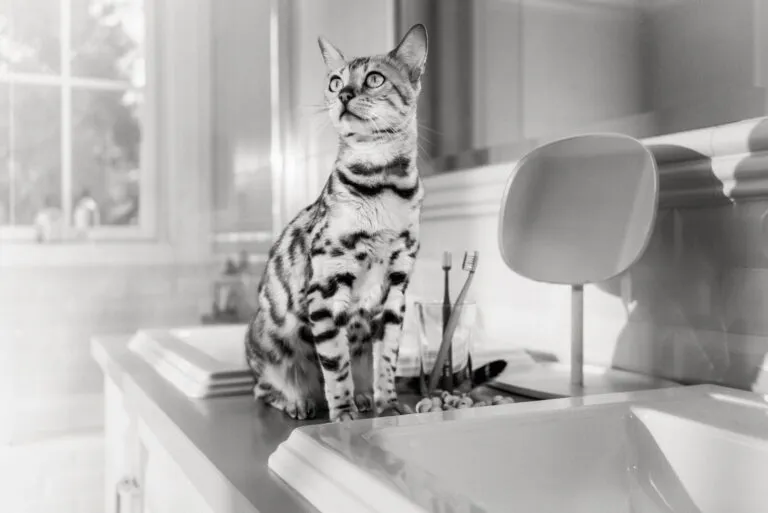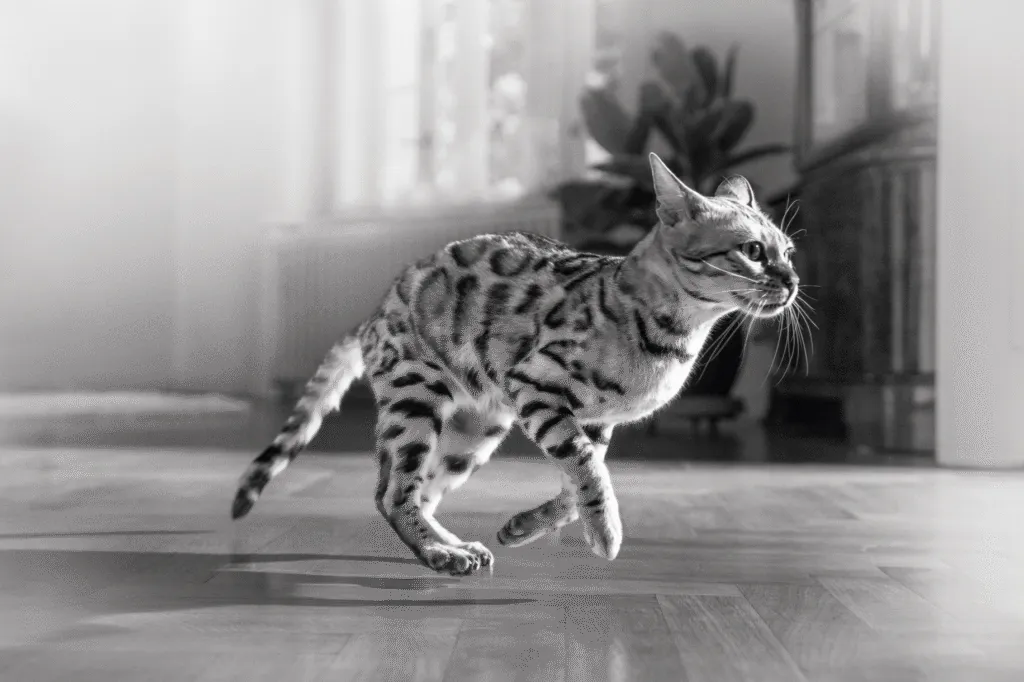How to Determine the Right Amount of Food for Your Cat
Some cats always seem to be hungry. But how much food does a cat need per day? This article helps you to find out the right amount of food for your cat.
If you are a cat parent, you have likely faced the challenge of your feline friend turning away from food you have carefully chosen. According to Royal Canin, 58% of cat owners offer a variety of foods to encourage eating, while 41% feel anxious when their cats refuse to eat. While it is natural to worry, picky eating is often more about preference and environment than health. Knowing the difference is key to keeping your cat healthy. So, what is behind this behaviour, and how can you keep your cat happy and well fed?

© Royal Canin
Offering a variety of high-quality foods early helps kittens accept new flavours and textures and prevents picky eating behaviour.
| An advertising feature presented in partnership with Royal Canin. This content is independent of zooplus Magazine’s editorial views. |
Ever wondered why your cat snubs a perfectly good bowl of food? Just like humans, cats have evolving preferences — especially when it comes to texture, flavour or even the shape of their dry food. It is not just stubbornness: It is an interesting mix of instinct and learned behaviour.
Recent studies show that over half of cats (53%) are considered picky eaters, with 37% classified as particularly fussy. Additionally, 36% display selective eating behaviours, highlighting the need for tailored nutrition to suit their individual tastes (Fussy Cats & Fussy humans, Mars Petcare & Brand Potential, July 2023)
As descendants of wild hunters, cats have an exceptional sense of smell and taste, with a natural inclination towards fresh, protein-rich meals. Early experiences also shape their eating habits — limited exposure to different textures and flavours during kittenhood can lead to a fear of new foods, known as neophobia.
Hydration also plays a role — cats are naturally low-thirst animals, so moisture-rich foods can sometimes be more appealing, especially for those that eat little. So, while your cat may seem fussy, it is a blend of biology, memory and a refined palate at play.
 © Royal Canin
© Royal Canin
Overall, cats are sensitive creatures. Stressful changes such as moving house, the arrival of new animals, unfamiliar people or even something as simple as changing the food bowl may affect their appetite.
Unconscious conditioning also plays a role: If a cat refuses its food and is immediately offered an alternative, it quickly learns that “not eating” leads to a reward. Over time, this behaviour can reinforce fussy eating.
Lastly, too many treats or table scraps may make regular meals seem less interesting, and frequent changes of food can unsettle a cat instead of helping.
According to International Cat Care (iCatCare), a cat welfare charity that has been working to improve the lives of cats, picky eating can be caused by more than just food preferences. Environmental factors, allergies or other underlying medical conditions may also be involved.
It is important to know: Any sudden or prolonged change in your cat’s eating habits may indicate an underlying health issue. If your cat has not eaten for more than 24 hours or shows symptoms like vomiting, diarrhoea or lethargy, a visit to the vet is essential. Before making any changes to their diet, consult a professional to ensure that it meets their specific nutritional needs.
Once medical issues are ruled out, there are several strategies to encourage your cat to eat:
“In a 2024 Royal Canin internal study, 72% of fussy cats showed a preference for specific textures. Royal Canin’s diets are formulated to appeal to both smell and taste, encouraging a positive mealtime experience,” notes Royal Canin.
Finding the right food means balancing taste, texture and nutrition. You may want to consider different dietary formats, such as chunks in gravy or jelly, or a loaf or pate, to find the right fit for your pet. Look for high protein recipes and rotate between wet and dry formats to keep things interesting.
With so many options to consider, it can be challenging to find the right routine. That is why Royal Canin has developed new feeding guidelines for both ideal-weight and underweight cats, including mixed feeding recommendations.
Royal Canin’s Fussy Cats Exigent is developed by nutrition experts to meet the palatability standards of fussy cats. Available in dry format, it can be paired with Royal Canin Sensory or Instinctive wet food. It combines appealing aromas and a crunchy texture to enhance the eating experience. This nutritionally balanced formula offers an irresistible taste experience to cater to the preference of fussy appetites.
“What’s interesting about Royal Canin Fussy Cats Exigent is that it was validated through extensive research, including a comprehensive Consumer & Market Insights (CMI) study. The results showed high satisfaction rates among pet owners, with 86% declaring that the new Fussy diet answers the fussiness of their cats”.
Formulated as a complete and balanced diet for adult cats, this food prioritises both taste and health benefits. Still, every cat is unique, so it’s best to check with your veterinarian regularly to ensure that the diet continues to meet your cat’s changing needs.
“Still, 81% would recommend it after two months. Notably, 28% of surveyed pet owners reported positive behavioural changes, describing their cats as more playful, more active, cuddlier and livelier after switching.”
Many cats also enjoy mixed feeding: a combination of wet and dry food. For this reason, Royal Canin’s Fussy Cats Exigent pairs well with Sensory or Instinctive Wet Food, offering variety in texture and flavour, hydration, and supporting healthy weight maintenance.
It also enables a more customised feeding plan that caters to each cat’s unique tastes and nutritional requirements.
Important: Be mindful of portion sizes when combining wet and dry food, as overfeeding can lead to weight gain over time. Following your vet’s guidance ensures that your cat stays at a healthy weight.
Starting early makes a difference. Offer a variety of safe, high-quality foods during kittenhood to broaden their palate and reduce resistance to new textures or flavours.
Stick to consistent feeding routines to help regulate appetite. While it is tempting to offer treats or switch foods when your cat refuses a meal, doing so too quickly can reinforce picky behaviour.
Instead, keep mealtimes structured and introduce changes gradually. Prevention works best when paired with patience — cats can take days or even weeks to accept a new food. Every cat has quirks, but mealtime should not be a struggle. By learning your cat’s preferences, fussy eating can improve.
A food diary can help you track your cat’s eating habits, symptoms and preferences, which makes it easier to spot patterns and understand their behaviour.
At Royal Canin, this commitment is no different. Founded by a veterinarian in 1968, the company has always prioritised tailored nutrition based on scientific research and careful observation. With over 50 years of experience in animal nutrition, Royal Canin has dedicated countless hours to studying dogs’ dietary needs to understand how nutrition can support a healthy lifestyle. During the manufacturing process, many different quality controls are implemented and all food production operators follow the same strict protocols. You can explore the full range of products here: Royal Canin Pet Food | Great deals at zooplus!
Find more information about the production process at Royal Canin here: Quality and food safety | Royal Canin UK
Quellen:
For more information on pet food ingredients and legislation, please visit:
Some cats always seem to be hungry. But how much food does a cat need per day? This article helps you to find out the right amount of food for your cat.
Summer is the peak season for refreshing ice cream, and cats enjoy it too when it's hot. Would you like to surprise your cat with some ice cream for a change? We will clarify whether ice cream is dangerous for cats and show you how to make your own healthy cat ice cream.